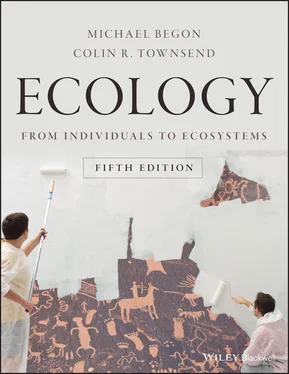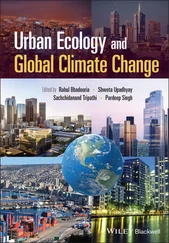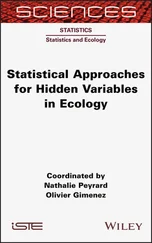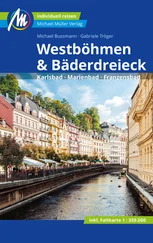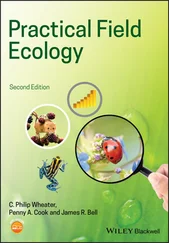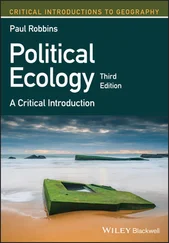For many rhizomatous and stoloniferous species, this changing age structure is in turn associated with a changing level to which the connections between individual ramets remain intact. A young ramet may benefit from the nutrients flowing from an older ramet to which it is attached and from which it grew. But the pros and cons of attachment will have changed markedly by the time the daughter is fully established in its own right and the parent has entered a postreproductive phase of senescence – a comment equally applicable to unitary organisms with parental care, like ourselves (Caraco & Kelly, 1991).
The changing benefits and costs of integration have been studied experimentally in the pasture grass Holcus lanatus , by comparing the growth of: (i) ramets that were left with a physiological connection to their parent plant, and in the same pot, so that parent and daughter might compete (competing, connected: CC); (ii) ramets that were left in the same pot so competition was still possible but had their connection severed (competing, not connected: CN); and (iii) ramets that had their connection severed and were repotted in their parent’s soil after the parent had been removed, so no competition was possible (independent plants, neither competing nor connected: NN) ( Figure 4.4). These treatments were applied to daughter ramets of various ages, which were then examined after a further eight weeks’ growth. For the youngest daughters, just one week old ( Figure 4.4a), connection to the parent significantly enhanced growth (CC > CN), but competition with the parent had no apparent effect (CN ≈ NN). For slightly older daughters, two weeks old ( Figure 4.4b), competition with the parent did depress growth (NN > CN), but physiological connection with the parent effectively negated this (CC > CN; CC ≈ NN). For even older daughters, however, the balance shifted further still. Competition with the parent again depressed growth of the daughter (NN > CN), but this time physiological connection to the parent was either not enough to fully overcome this (at four weeks, Figure 4.4c; NN > CC > CN) or eventually appeared to represent a further drain on the daughter’s resources (after eight weeks, Figure 4.4d; NN > CN > CC).

Figure 4.4 Integration within a plant leads to a shifting balance of positive and negative effects between parent and daughter modules as modules age.The growth of daughter ramets of the grass Holcus lanatus , which were initially (a) one week, (b) two weeks, (c) four weeks and (d) eight weeks old, and were then grown on for a further eight weeks. LSD, least significant difference, needs to be exceeded for two means to be significantly different from each other. For further discussion, see text. CC, competing, connected; CN, competing, not connected; NN, independent plants, neither competing nor connected.
Source : After Bullock et al . (1994).
If we are going to study birth, death and modular growth seriously, we must quantify them. This means counting individuals and (where appropriate) modules. Indeed, many studies concern themselves not with birth and death but with their consequences – the total number of individuals present and the way these numbers vary with time. Whether organisms are unitary or modular, ecologists face enormous technical problems when they try to count what is happening to populations in nature. A great many ecological questions remain unanswered because of these problems.
what is a population?
It is usual to use the term population to describe a group of individuals of one species under investigation. What actually constitutes a population, though, will vary from species to species and from study to study. In some cases, the boundaries of a population are readily apparent: the sticklebacks occupying a small lake are ‘the stickleback population of the lake’. In other cases, boundaries are determined more by an investigator’s purpose or convenience: it is possible to study the population of lime aphids inhabiting one leaf, one tree, one stand of trees or a whole woodland. In yet other cases – and there are many of these – individuals are distributed continuously over a wide area, and an investigator must define the limits of a population arbitrarily. In such cases, especially, it is often more convenient to consider the density of a population. This is usually defined as ‘numbers per unit area’, but in certain circumstances ‘numbers per leaf’, ‘numbers per host’ or some other measure may be appropriate.
estimating population size
To determine the size of a population, one might imagine that it is possible simply to count individuals, especially for relatively small, isolated habitats like islands and relatively large individuals like deer. For most species, however, such ‘complete enumerations’ are impractical or impossible: observability – our ability to observe every individual present – is almost always less than 100%. Ecologists, therefore, must almost always estimate the number of individuals in a population rather than count them. They may estimate the numbers of aphids on a crop, for example, by counting the number on a representative sample of leaves, then estimating the number of leaves per square metre of ground, and from this estimating the number of aphids per square metre. For plants and animals living on the ground surface, the sample unit is generally a small area known as a quadrat (which is also the name given to the square or rectangular device used to demarcate the boundaries of the area on the ground). For soil‐dwelling organisms the unit is usually a volume of soil; for lake dwellers a volume of water; for many herbivorous insects the unit is one typical plant or leaf, and so on. Further details of sampling methods, and of methods for counting individuals generally, can be found in one of many texts devoted to ecological methodology (e.g. Krebs, 1999 ; Henderson & Southwood, 2016).
For animals, especially, there are two further methods of estimating population size. The first is known as capture–recapture . At its simplest, this involves catching a random sample of a population, marking individuals so that they can be recognised subsequently, releasing them so that they remix with the rest of the population, and then catching a further random sample. Population size can be estimated from the proportion of this second sample that bear a mark, since, as long as the population remains the same between the two samples, that proportion should be the same as in the whole population, and the number marked in the population is known, since we, the investigators, marked and released them. In practice, there is usually a whole sequence of capture–recapture samples (not just two), and the assumption that populations remain the same between samples is relaxed. Methods of analysis are consequently more complex and more powerful (Cooch & White, 2019).
The final method is to use an index of abundance . This can provide information on the relative size of a population, but by itself usually gives little indication of absolute size. As an example, Figure 4.5shows how the number of occupied ponds, and the amount of summer (terrestrial) habitat in the vicinity of a pond, affected the abundance of leopard frogs ( Rana pipiens ) near Ottawa, Canada. Here, frog abundance was estimated from the ‘calling rank’, based on whether there were no frogs, ‘few’, ‘many’ or ‘very many’ frogs calling on each of four occasions. Despite their shortcomings, even indices of abundance can provide valuable information.
Читать дальше
